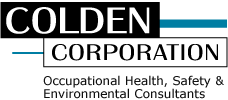Beryllium (Be) is a strong, light metal useful in electronics, aerospace, and for windows in radiation detection equipment. From a worker health perspective exposure to beryllium is linked to beryllium sensitization and Chronic Beryllium Disease (CBD), which is incurable, debilitating, and potentially fatal. The International Agency for Research on Cancer (IARC) classifies beryllium and beryllium compounds as ‘carcinogenic to humans’ (Group I), and EPA classifies beryllium as a likely human carcinogen, the lung being the primary target organ”. 1 Sensitization can arise from inhalation or skin contact with beryllium.
The Occupational Safety and Health Administration (OSHA) and the American Conference of Governmental Industrial Hygienists (ACGIH) have established the following limits for exposure to airborne concentrations of beryllium.
OSHA: 0.2 micrograms per cubic meter (µg/m3) as an 8-hour time weighted average (TWA).
2.0 µg/m3 as a Short Term Exposure Limit (STEL) of 15 minutes duration.
ACGIH: 0.05 µg/m3 based on an inhalable fraction as an 8-hour TWA.
In their substance-specific standard, OSHA requires the employer to assess the airborne exposure of each employee who is or may reasonably be expected to be exposed to airborne beryllium in accordance with one of two methods:
- A performance option, on the basis of any combination of air monitoring data and objective data sufficient to accurately characterize airborne exposure to beryllium, or;
- A scheduled monitoring option. Air samples are taken on mixed cellulose ester (MCE) filters at an air flow rate of 2 to 4 liters per minute (lpm). Sampling duration must be sufficient to achieve a result below the prescribed limit for airborne Be based on the detection limit for the analytical method.
There is no quantitative governmental general industry regulation to limit beryllium surface contamination. OSHA says simply to maintain eating, drinking and work areas as free from beryllium as practicable.
The Unites States Department of Energy (DOE) regulates beryllium surface contamination within DOE facilities:
“Where beryllium is present in operational areas of DOE facilities, the responsible employer must conduct routine surface sampling to determine housekeeping conditions. Surfaces contaminated with beryllium dusts and waste must not exceed a removable contamination level of 3 µg/100 cm2 during non-operational periods.
Before releasing beryllium-contaminated equipment or other items to the general public or for use in a non-beryllium area of a DOE facility, the responsible employer must ensure that the removable contamination level of equipment or item surfaces does not exceed the higher of 0.2 µg/100 cm2 or the concentration level of beryllium in soil at the point or release, whichever is greater.”2
Surface samples are best collected using Ghost Wipes moistened with deionized water, wiping a known area of at least 100 cm2. The Ghost Wipe should be folded into quarters and the surface wiped starting at the outermost edge of the area to be sampled and moving inward in concentric squares. The exposed surface should then be folded inward the process repeated with a clean quarter of the wipe. The surface should be triple wiped in this fashion.
Beryllium can pose special collection and analysis problems for the industrial hygienist and analytical chemist. The industrial hygienist must be aware of the origin of the Be prior to sampling and analysis. As with other metals, elemental beryllium can be collected and analyzed using National Institute for Occupational Safety and Health (NIOSH) Method 7300, analysis of which is by inductively coupled plasma, atomic emission spectroscopy (ICP/AES).
High fired (1450oC) beryllium oxide (BeO) also known as Beryllia is a ceramic material that has unique electrical and thermal conductivity properties making it useful in electronic devices. High fired BeO is an extremely insoluble refractory compound requiring specialized digestion techniques in the analysis of industrial hygiene samples.
For assistance in Be exposure assessments and sampling plan development, please reach out to Colden consultants at colden@colden.com or enter your inquiry here.
1 Taruru, Seuri, The Synergist, Beryllium Laboratory Analysis, Will Regulations Drive Science, August 2017.
2 United States Department of Energy, Title 10, Chapter III, Part 850 Chronic Beryllium Disease Prevention Program.

